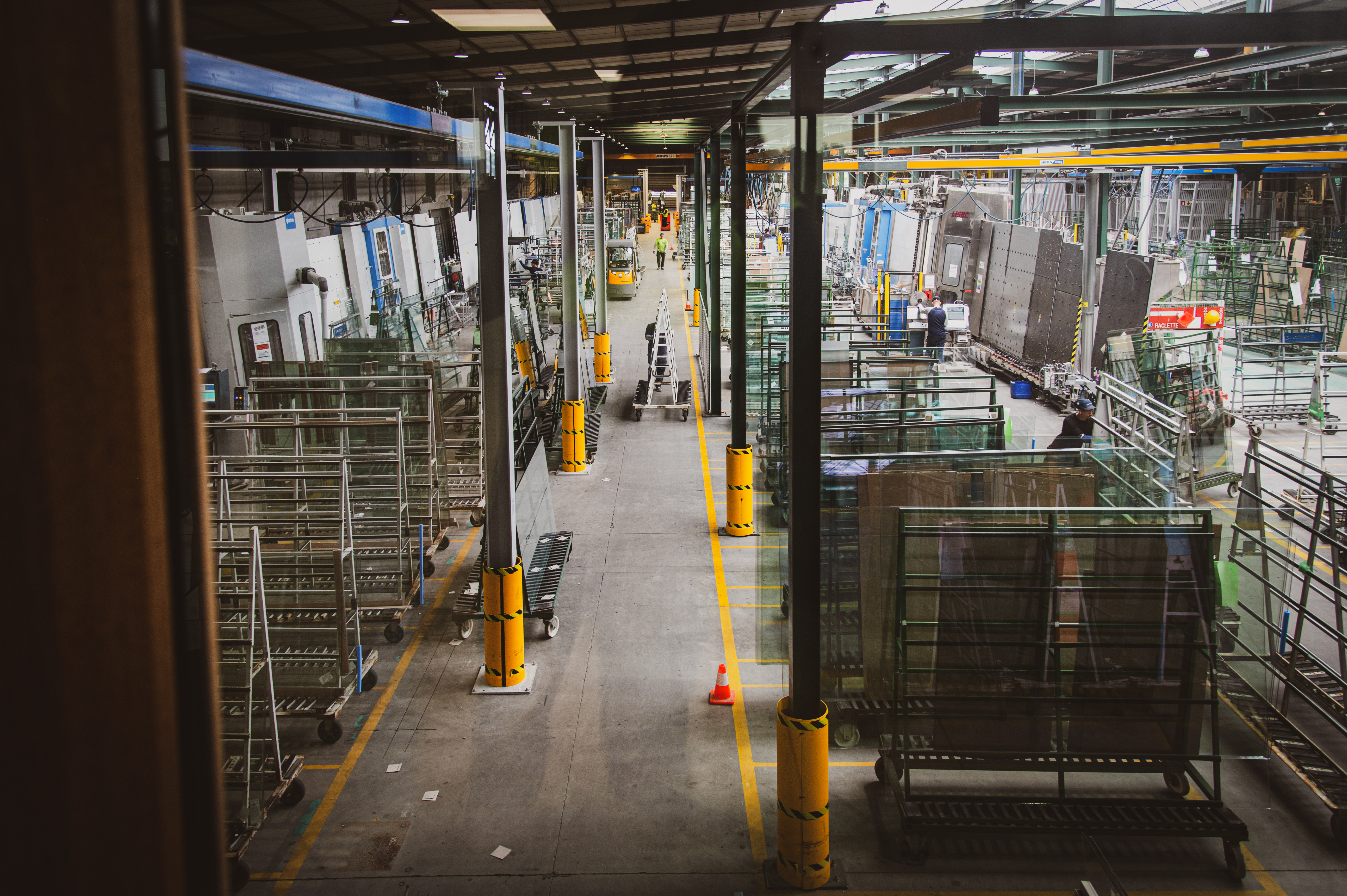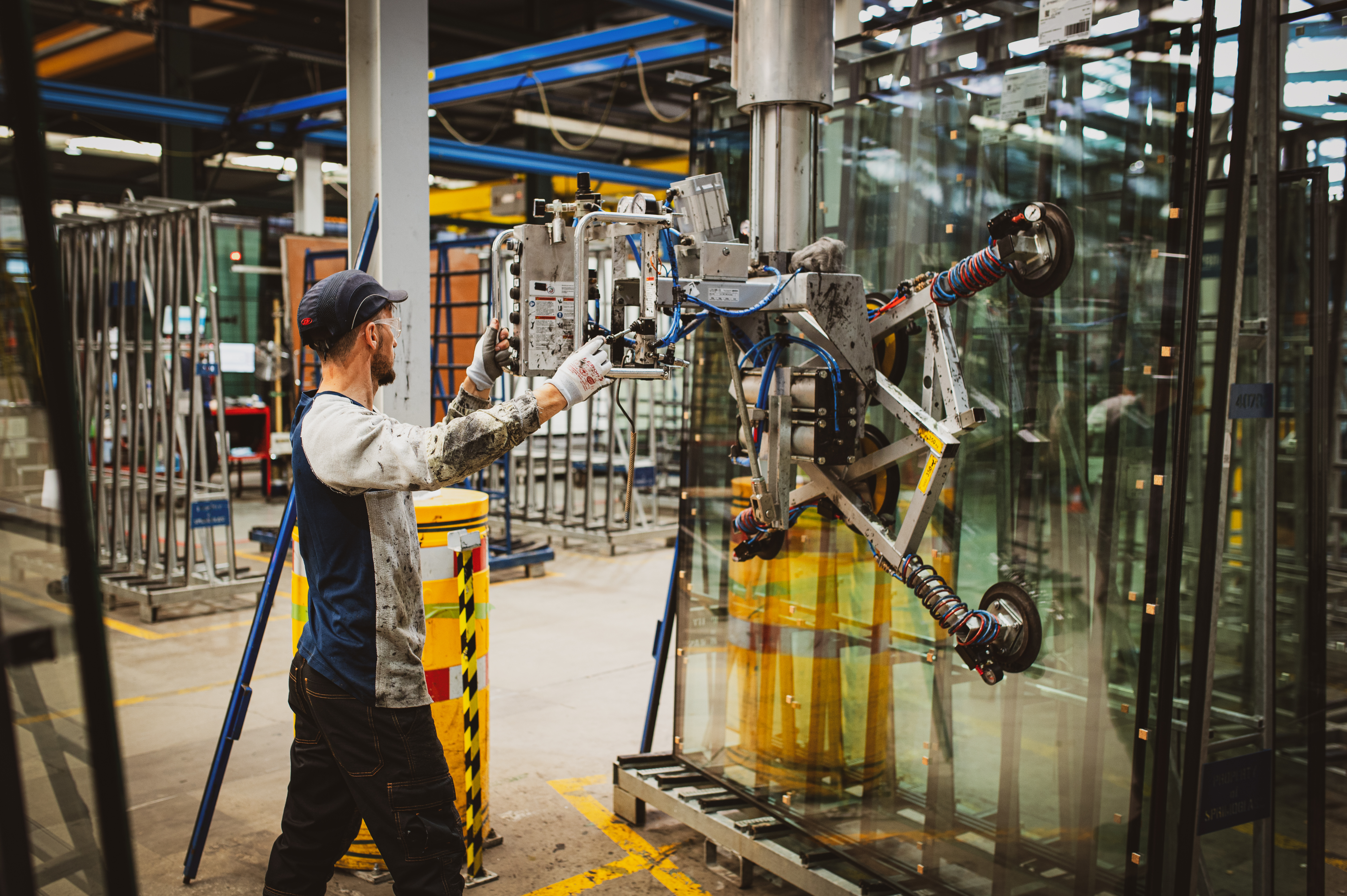If your glass production line is constantly behind schedule, materials are wasted, and inefficiencies are eating into your profits, it’s a sign that production planning challenges need to be addressed. Many glass processors face these obstacles daily, struggling to streamline operations and improve workflow efficiency.
At Synerglass-Soft, we’ve worked with dozens of glass manufacturers to identify and resolve these production bottlenecks. With industry expertise and hands-on experience, we know what works—and what doesn’t—when it comes to efficient production planning.
In this article, we’ll break down the five biggest production planning challenges that glass processors face—and, most importantly, how you can avoid them with the right strategies and tools.
The hidden costs of poor production planning
Effective production planning in the glass industry isn’t just about avoiding bottlenecks—it’s about creating a proactive, data-driven strategy that drives profitability. By leveraging advanced production scheduling and real-time tracking, glass processors can anticipate problems before they arise, aligning the entire production cycle to meet both internal goals and external deadlines.
Successful companies don’t just react to issues—they set themselves up to avoid them from the start. With the right planning tools, every decision is informed and purposeful, ensuring that resources are utilized to their maximum potential and waste is minimized.
With that foundation in mind, let’s dive into the top five production planning challenges that glass processors face and how to overcome them.
Issue #1: Poor order sequencing slows production and wastes resources
The challenge:
Glass processors must carefully plan the order in which glass sheets are cut, processed, and assembled. If production orders are not sequenced properly, it leads to bottlenecks and unnecessary rework, slowing down the entire production process.
Why it matters:
Poor order sequencing can lead to several issues that severely impact production efficiency. For example, processing heavy, complex glass pieces before simpler ones may create unnecessary delays in the cutting or tempering stages, causing a ripple effect throughout the production line. In some cases, operators may have to pause their work to accommodate last-minute adjustments to sequencing, further extending lead times and reducing productivity.
How to avoid it:
While a dedicated sorting center can optimize sequencing by temporarily storing glass in the right order, many processors lack the space or resources for one. However, sequencing can still be optimized by focusing on upfront cutting scheduling. By grouping glass pieces based on the most efficient production order from the start, the process becomes more organized.
Using optimization software, you can create “cutting piles” to specify the exact sequence for each production stage. Operators can follow these predefined sequences, ensuring smooth transitions and reducing downtime, even without a sorting center.
Read more about how optimization reduce scrap rate and maximize efficiency here.
This approach improves workflow and minimizes waste, leading to a more efficient production process.
But even with perfect sequencing, things can still go wrong if you don’t have real-time visibility into production progress. That’s where tracking comes into play.
Issue #2: Without dynamic monitoring, production bottlenecks go unnoticed
The challenge:
Production processes in the glass industry involve multiple operations, including cutting, processing, edging, assembly, and tempering. Without dynamic follow up, it’s difficult to monitor where each glass piece is within the production cycle. This can lead to miscommunication, delays, and production stoppages.
Why it matters:
Without dynamic monitoring, production teams rely on outdated status updates, leading to inefficiencies and delays.
For example, “if a piece of glass is stuck in the cutting stage but has already been scheduled for assembly, it can cause a bottleneck, delaying the entire process. Operators may not be aware of these discrepancies unless there’s a system in place.”
How to avoid it:
A production monitoring tool like Symbiose allows operators at each workstation to update the status of a glass piece as it moves through the production line. This system should:
- Allow operators to select their workstation (e.g., cutting, assembly, tempering).
- Automatically update the production queue for downstream processes.
- Generate real-time labels that identify each glass sheet and its next step.
If you want to learn more about how ERP systems enhance production monitoring, read our article on the subject here.
With this visibility, production managers can monitor progress, quickly identify bottlenecks, and make real-time adjustments.
Issue #3: Unbalanced machine workloads lead to delays and wasted capacity
The challenge:
Glass processors often struggle to balance workloads across different machines. If one machine is overloaded while another is underutilized, it results in longer lead times and inefficient use of resources.
Why it matters:
When resources are not properly balanced, the production flow becomes unpredictable. For example, if a cutting machine is running at full capacity while a tempering furnace sits idle, it creates an imbalance that affects overall throughput and raises operational costs. Additionally, overloading one machine leads to premature wear and tear, reducing machine lifespan and increasing maintenance costs.
How to avoid it:
Implementing an automated production planning system helps distribute workloads effectively. These systems:
- Assign glass sheets to machines based on capacity and availability.
- Balance workloads across multiple production lines.
- Adapt dynamically if a machine goes down or requires maintenance.
Automated load balancing software ensures that machines operate at optimal efficiency, adjusting in real-time based on workload and machine availability. This prevents bottlenecks and reduces the risk of downtime.
For example, automatic load balancing ensures that if one tempering furnace is at capacity, another available furnace is used instead, reducing downtime and improving efficiency.
However, even perfectly balanced workloads won’t prevent delays if materials aren’t available.
Planning should always consider stock levels in real time. If key components (like float glass, spacers, or laminated sheets) are missing, machines stay idle—no matter how well production is scheduled. Integrating inventory visibility into planning tools helps avoid this by flagging low stock and preventing scheduling based on unavailable materials.
But even if resources are well-balanced, production planning plays a huge role in keeping operations smooth. If schedules don’t align with real-world constraints, gaps and inefficiencies will still appear.
Issue #4: Misaligned schedules create costly last-minute rushes
The challenge:
Glass processors must meet strict delivery deadlines while considering production constraints. If production is planned without factoring in these constraints, last-minute rushes and delays can occur.
Why it matters:
In the glass industry, delays in production can lead to missed deadlines, unhappy customers, and even financial penalties. Production schedules that don’t account for realistic lead times often result in rushed processes, quality issues, and dissatisfied clients.
How to avoid it:
Automated or semi-automated planning based on delivery deadlines ensures that production workflows are aligned with shipping requirements. Key strategies include:
- Setting a buffer period between the final assembly and delivery to account for unforeseen issues.
- Using backward scheduling, where the system automatically calculates production start dates based on required delivery dates.
- Defining lead times for each production stage (e.g., cutting → assembly → delivery) so production planning reflects realistic turnaround times.
![]() Don’t forget subcontracted steps in your schedule.
Don’t forget subcontracted steps in your schedule.
If part of the process—like tempering or screen printing—is outsourced, delays from your supplier can derail your entire timeline. A robust planning system should account for these external lead times by integrating supplier delivery dates into your master schedule and creating buffers for potential shifts.
With backward scheduling, planners can ensure that each task is given the necessary time to be completed without compromising quality or delivery deadlines. This method ensures no last-minute rushes or shortcuts.
However, even the best schedules can fall apart if unexpected machine breakdowns occur. That’s why maintenance planning is just as important as production planning.
Issue #5: Neglecting maintenance planning causes expensive downtime
The challenge:
Unexpected machine breakdowns can cause major disruptions in production. Without a proper maintenance schedule, necessary interventions may be overlooked, leading to failures at critical moments, delaying orders, and increasing costs.
Why it matters:
Unplanned downtime can halt production completely, leading to a loss in output, missed deadlines, and costly emergency repairs. When maintenance tasks are not properly tracked and scheduled, issues may go unnoticed until they cause serious disruptions.
How to avoid it:
A structured maintenance management system helps prevent unplanned downtime by:
- Allowing teams to schedule and track maintenance tasks efficiently.
- Providing a centralized system for logging service notes, maintenance requests, and machine incidents.
- Offering a maintenance calendar to ensure regular servicing and reduce the risk of unexpected failures.
- Generating reports and statistics to monitor maintenance activities and identify recurring issues.
By integrating maintenance planning into the overall production workflow, glass processors can ensure their equipment remains in optimal condition, reducing downtime and improving overall efficiency.
Take control of your production planning today
At the end of the day, inefficient production planning can lead to costly delays, wasted materials, and lost profits. This is especially true if scheduling conflicts, resource misallocation, or workflow bottlenecks are left unaddressed.
Now that you’ve learned how to identify and fix these issues, what’s next?
- Take a closer look at your current scheduling and tracking processes.
- Identify where bottlenecks and waste are slowing you down.
- Start automating production planning for maximum efficiency.
At Synerglass-Soft, we specialize in providing tailored solutions to optimize production planning for glass processors. We’ve helped businesses like yours streamline their operations and improve efficiency.
Need expert help? Book a free consultation with our team today to transform your workflow.




